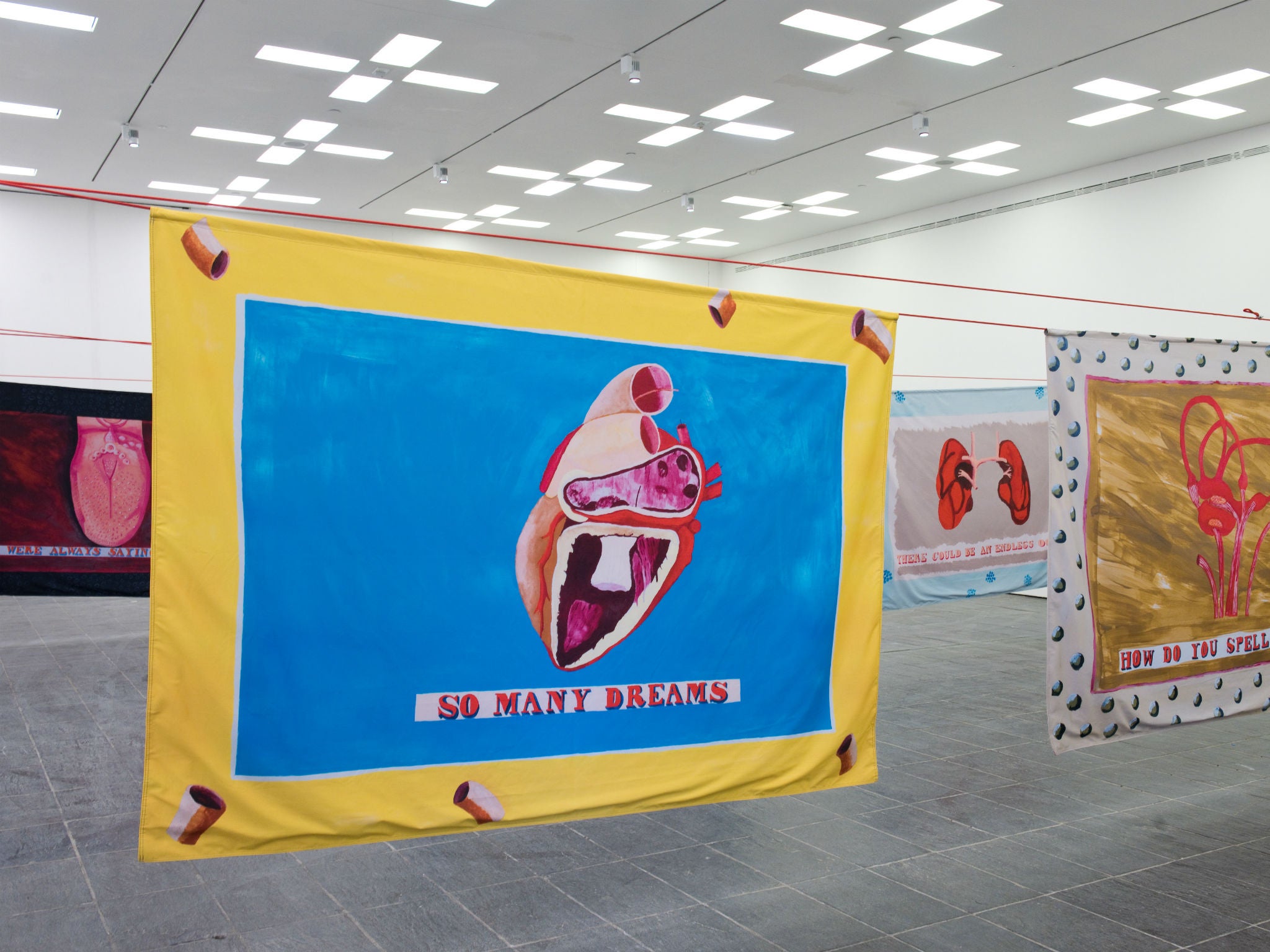Our Kisses Are Petals, Lubaina Himid, Baltic, Gateshead, review: Dancingly alive
In her first show since winning the Turner prize, the 63-year-old artist hangs out banners emblazoned with organs and poetry

Joseph Rank’s old flour mill on the Gateshead bank of the River Tyne opened for business as an arts centre in 2002. Three years before that happened, Anish Kapoor installed a giant public sculpture called Tarantantara inside the shell of the building. A swelling manifestation in grisly blood red, as much a fantastical variant upon the idea of a monstrously inflated body part as anything else, it seemed to push back against the very walls of the place, as if encouraging art to explode outwards into the city.
He was to do something rather similar when he created an oversize, unplayable, double-headed bugle form called Marsyas in Tate Modern’s Turbine Hall some years later. Well, perhaps Cyclops could have played it.
That gesture by Kapoor seemed to be uncannily prescient about the future of this space. This is no ordinary public gallery. There’s no permanent collection, and in the past artists have often been encouraged to make work in situ and then show it here – solid evidence of the fruits of local labour.
It shows different exhibitions on all four floors. It feels a bit like a cross between a factory and a department store, art-goods forever in the making and the remaking, forever showing off to the public the reason for its being here in the first place, justifying its very existence in the severe court of local opinion.
Lubaina Himid won the Turner Prize last year for a body of work that felt like an anthology of what she and the curators of that show regarded as some of her greatest hits – the most remarked upon exhibit was a piece of rather dated political satire made in the 1980s when laughing at the Reagan/Thatcher lovefest was all the rage. At 63 years of age, she was the oldest person ever to have scooped the prize.
This is her first significant public outing since then, and it’s entirely in the spirit of this place. The works seem to exist in a constant state of gentle physical agitation. Seven rectangular panels, all painted fabric, hang suspended from red cords. They’re organised in three rows, and they feel as if they are just about to start processing up the room before they leave altogether.
Are these banners? Are they garments? A bit of both. They all feel so inconsequentially everyday hung out like this, wall-to-wall, like clothes strung out on a backyard washing line. Each panel consists of a painted border and an image of a human body part – heart, lungs, a cross section of some hair follicles. Beneath each image runs an inscription, a line of poetry perhaps, snatched from one of her favourite writers – who, generally speaking, tend to be marginalised, black and gay. James Baldwin and Audrey Lorde, for example.
Does this sound a bit tediously right-on, brothers and sisters? It manages not to be. Just.
Somehow the words feel poignant in the context of such visual evidence of bodily fragility, as if the body itself is engaged in self-scrutiny, as if bodily organs really are in fact the symbols that those great Elizabethan poets always took them to be when they wrote of the human heart as the seat of our emotions. The words come most dancingly alive when the colour contrasts are at their most stark and most violent.
Soon these works will indeed be paraded though the streets of Newcastle. The whole exhibition will shift from being gallery art to being performance art. That’s exactly right, we feel. That’s where they belong.
Until 28 October (baltic.art)
Join our commenting forum
Join thought-provoking conversations, follow other Independent readers and see their replies
0Comments